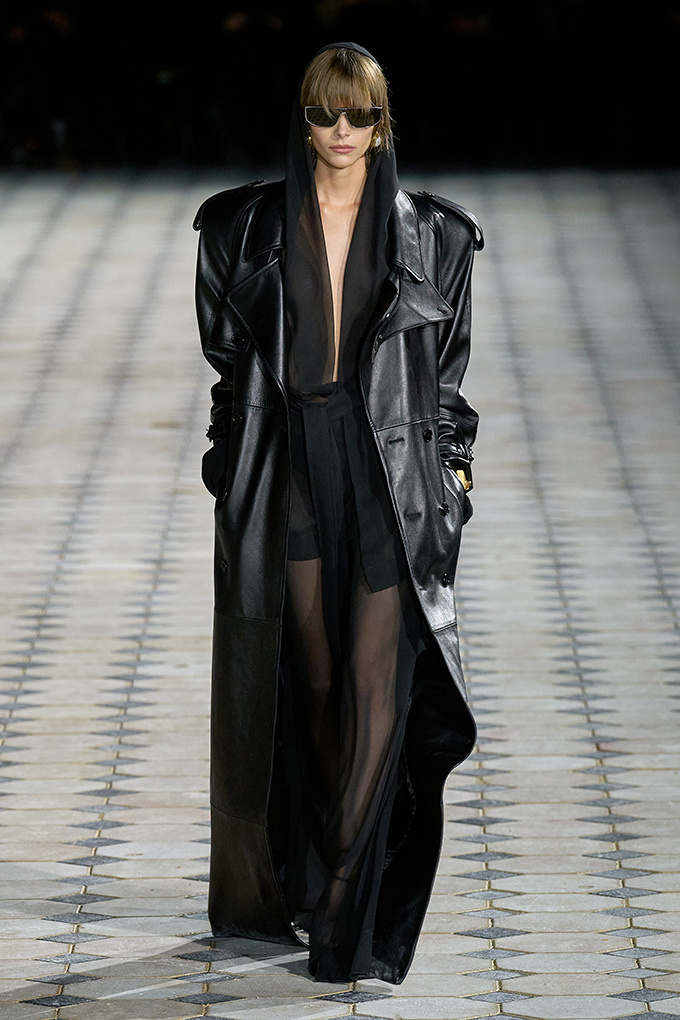“To me, the body says what words cannot,” Martha Graham, the revered, radical American modern dancer and choreographer once said. It wouldn’t be crazy to think that’s the kind of statement Anthony Vaccarello of Saint Laurent would concur with. His work for the house has always exalted a corporeal glory; his own view of physicality—strong, celebratory, unapologetic—and the legacy of the house merged to be totally in sync.
Graham’s and Vaccarello’s orbits surprisingly spun into each other at his spring 2023 show, which was staged in the almost dream-like Parisian setting of a grand paved garden replete with cascading fountain that Marcel Carné would have been thrilled to have filmed upon. (The set was built especially for the show, sweeping staircases, perfectly laid flagstones and all.) The result: a quietly epic examination of what happens when you both reveal and conceal the body—and the frisson you generate when you make your look long, lean and loaded with attitude.
Backstage, just before the show, Vaccarello mentioned that he’d been looking at the groundbreaking way that Graham dressed her company in tubular dresses for her 1930 production Lamentation, costuming which audaciously emphasized every bit of physical agility from her dancers. Vaccarello first discovered Graham, he said laughing, by being a fan of Madonna’s in the 1990s, when the Material Girl had been busy (rightly) singing Graham’s praises to the sky. But for spring Vaccarello looked back a decade earlier to YSL’s past—the mid-’80s days when models strode those old school elevated podiums in Monsieur Saint Laurent’s hooded, draped, capuche dresses. They were visions of languid elegance, dressed to the nines with myriad jewelled accessories, the maquillage as immaculate as the hauteur they were so gifted at projecting.
Vaccarello riffed on all the draping and hooding for a slew of beautifully rendered dresses cut from jersey in two different weights, one heavier and opaque, giving a more constructed look; the other lighter and gauzier, gently—and barely—veiling the body underneath. Some of these dresses were slipped under sweeping great coats and trenches which fell in narrow columnar proportions from big shoulders in leather or tweed or wool, or with more leather in the form of capacious blouson jackets which nipped inwards as their cut moved towards the waist. (Vaccarello deftly mimicked the silhouette and made it more day with a draped sweater with a hood over tapering track pants—and in contrast, loosened everything up with a series of terrific pyjama suits, the standout in ivory polka dots on black.)
Vaccarello’s colour palette was gloriously muted but definitive, taken from the clothes shot on Polaroid from YSL fittings back in the day: soft browns, purples, camels, olives and taupes, their tones heightened by the substantial jewelled or Claude Lalanne-esque gold cuffs. There were barely-there sandals and satiny pumps with high cut vamps and gleaming metallic shades. Everything came together to create a look that was finished, polished, considered, and—time to bring back this word, clearly—done: A riposte to the idea that everything is heading us towards some inexorable slide into bland, dull, uniform, social media hyped ‘coolness.’
Yet ’30s or ’80s, it didn’t really matter. What drives Vaccarello is where we are right now. Despite the historical referencing, his push is to always exist in the present. You can trace that from this collection back through his last few women’s runway shows. It’s a thread which takes you from the bold shouldered blazers and latex of winter 2020 to the Belgian-y swaggering coats and floor-trailing skirts he did for fall, to tonight’s offering. Let’s call what Vaccarello is doing empower dressing. It doesn’t rest on the outward gestures—the width of the shoulders, the height of the heels, or the length of the skirts. Instead, it reflects what’s within, unspoken, but undeniably powerful and potent.
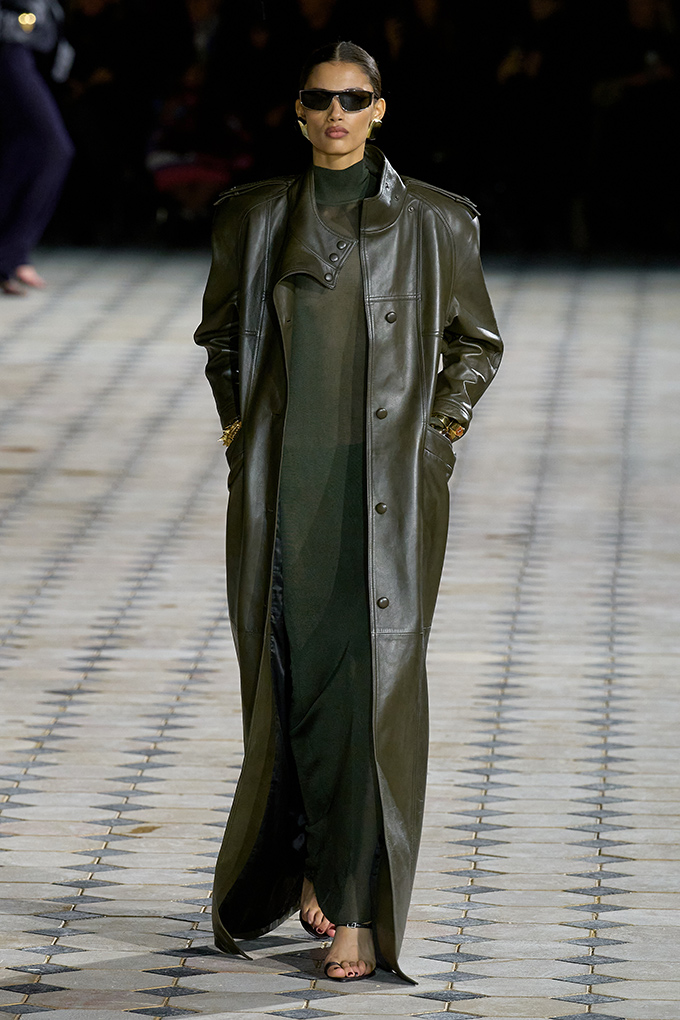
1 / 16

2 / 16

3 / 16

4 / 16
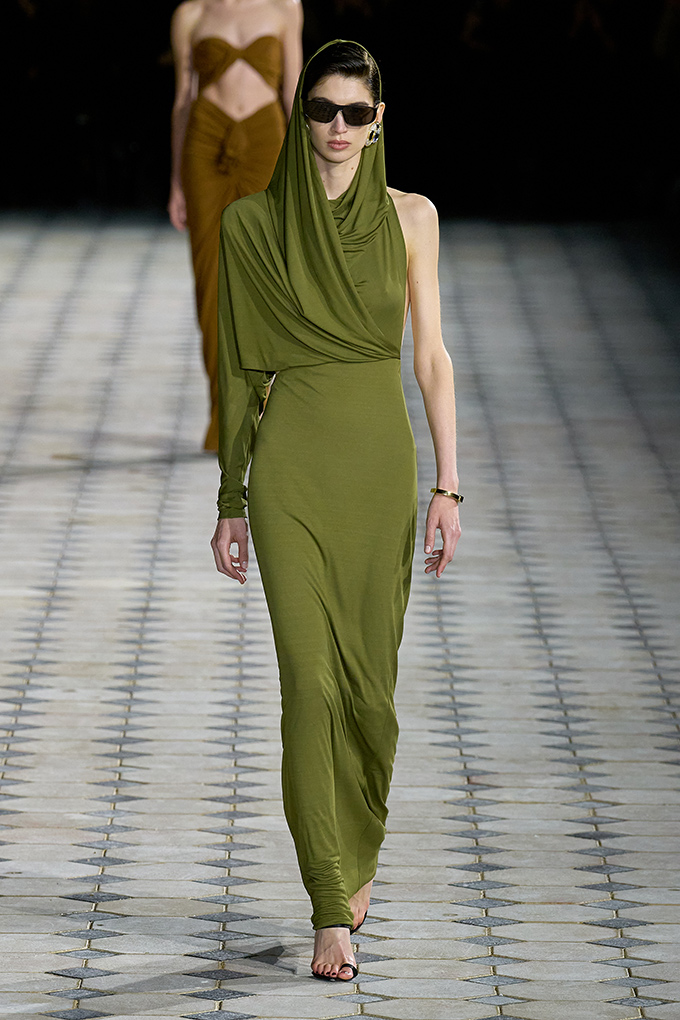
5 / 16

6 / 16

7 / 16

8 / 16

9 / 16
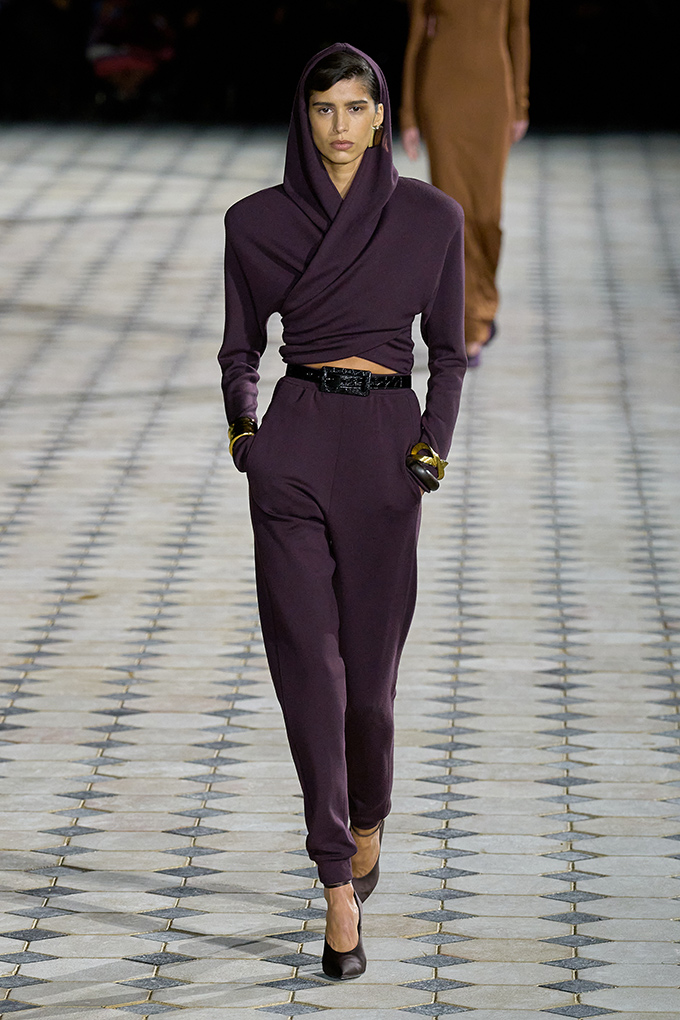
10 / 16
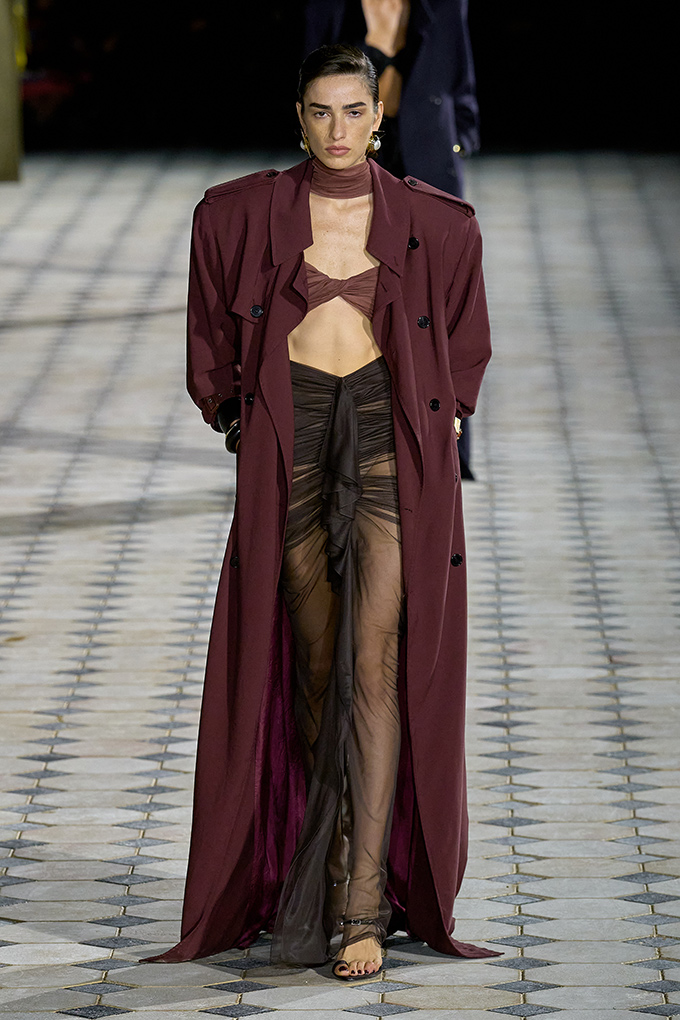
11 / 16

12 / 16

13 / 16

14 / 16

15 / 16


